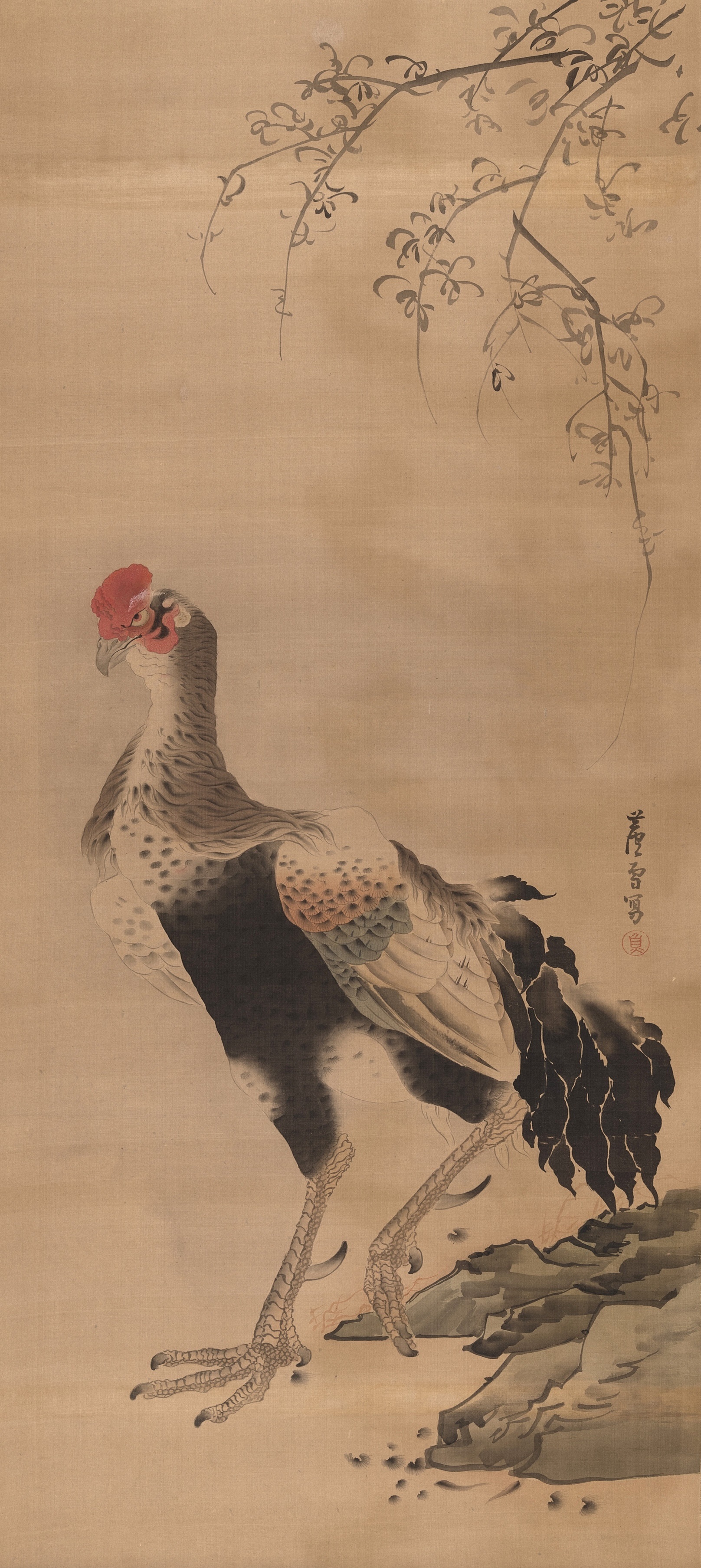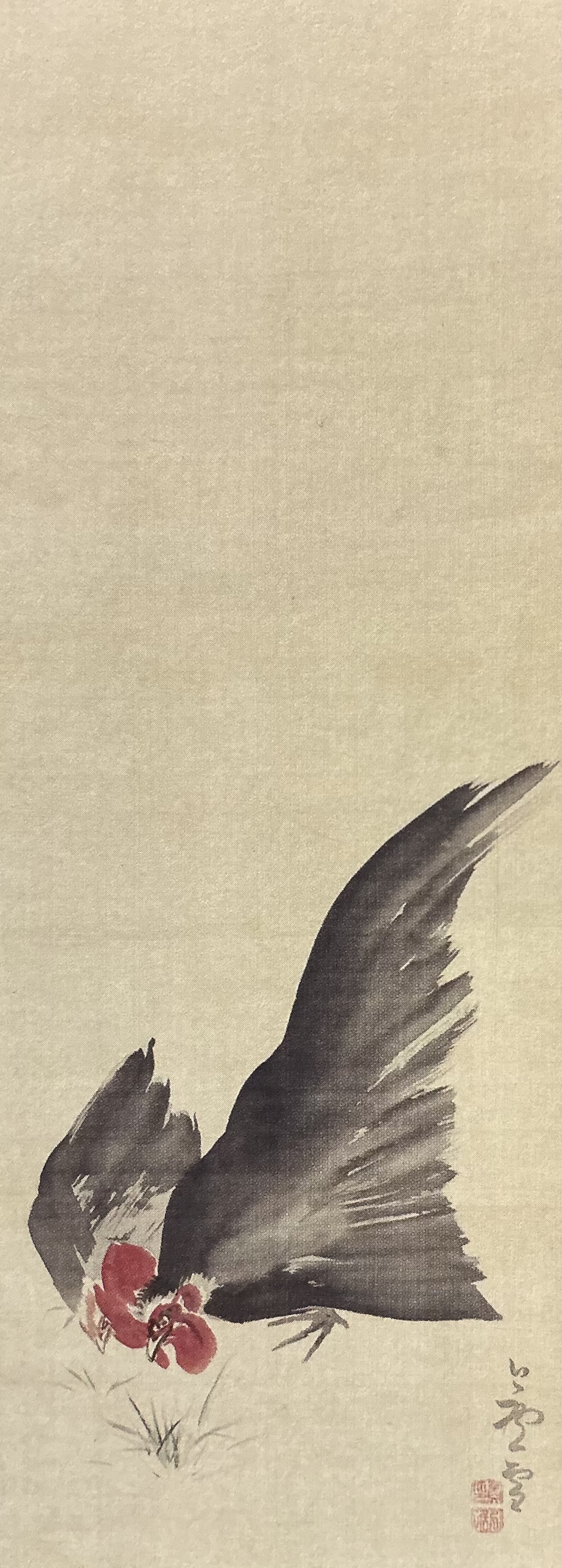"Mastering the Art of Collecting Japanese Paintings"
NAGASAWA ROSETSU
23/08/2024 General News
Every Asian art specialist is regularly asked the returning boomerang question: ‘what is the area of Asian art to invest in?’ The current market favours Chinese artworks, but being Japanese-biased I tend to recommend pieces originating from my beloved archipelago. The quality and craftsmanship of the Japanese pieces have not changed since thirty or forty years ago, when they achieved top prices: the present situation is a trend- and trends change.
To narrow down my advice I point towards flat art: prints and paintings. Understandably, this category could seem complex, esoteric, and intimidating for young collectors on a tight budget, but there are ways to acquire works by big ticket names at a attractive price. Similar tendencies can be spotted on the Western art market, where young buyers choose prints or drawings by famous artists: one can own a Rembrandt without having to mortgage one’s house.
East Asian paintings fit this reasoning exceptionally well. The most popular artistic medium of the region is ink, a harsh mistress if one doesn’t know how to handle it. Once the line is drawn, no corrections can be made, it has to be PERFECT the first time around. Regardless, many famous painters deliberately reached for this specific medium for various reasons: sometimes to create a quick, freely executed preparatory drawing, sometimes as a way to express a deeper meaning through a simpler form. Despite coming from under the brush of the same painter, the difference in prices of an ink sketch and a detailed colour painting can be hundreds, versus thousands of pounds.
A fantastic illustration of this rationale are three Japanese paintings from the upcoming collection of Dr. Claudio Perino. All three bear the name of Nagasawa Rosetsu, a Kyoto School painter most famous for painting chickens observed from nature. Depicting a living, moving bird from all possible angles can be challenging as the painter has to work quickly to achieve the desired composition. The sketches can later be used as a base for more polished versions of the designs, painted in the comfort of the studio.
A Fierce Cockerel in ink and colour on silk shows the bird in full readiness to defend his position in the pecking order. The overhanging branch of a blooming cherry tree is only roughly suggested with quick brushstrokes, but the bird itself has been depicted with great care, as if the artist pored over every feather. A high level of artistry and finish commands a higher market value, in this case we are talking about a sum ranging in tens of thousands of pounds.

NAGASAWA ROSETSU (1754 — 1799)
A Fierce Cockerel
Japan, Edo period, circa 1795
Ink and colour on silk, signed Rosetsu and sealed
111cm x 49.5cm
A Pair of Chickens is a great example of the ‘medium finish’. Here, Rosetsu displays the skilful mastering of the medium by operating in graduated patches of ink to create the impression of space and perspective. The cockerel and hen are pecking among a few tufts of grass only suggested by light strokes of brush. The only splashes of colour are the birds’ combs and the artist’s seals. The overall impression is that of a quiet bucolic scene executed in a light and graceful style.
In market terms we are roughly looking at a price level of several thousands of pounds.

NAGASAWA ROSETSU (1754 — 1799)
A Cockerel and a Hen
Japan, Edo period, 18th century Ink and colour on silk, signed Rosetsu and sealed Gyo / Inkyo
99cm x 35cm
Snails are certainly easier to capture on paper than the ever-moving birds, but the third painting, The Snail on a Bamboo Stalk, has been drafted most likely in less than half an hour. In a few simple strokes of the brush the artist tells us a whole story: the persistent gastropod is straining his long neck, patiently climbing up to reach the safety of the canopy, a long road for such a small creature. The impression of this scene takes the ‘volume’ of the world right down and perfectly embodies the Zen idea of being ‘here and now’. We can almost hear the silence broken by the gentle rustle of the bamboo leaves, all translated into an image with a few simple brushstrokes. This type of lighthearted piece can be acquired for under pounds at auction.

NAGASAWA ROSETSU (1754 — 1799)
Snail and Bamboo
Japan, Edo period, 18th century
Ink on paper, signed Rosetsu and sealed Gyo
94cm x 28cm
Same artist, same medium- three completely different paintings creating completely different impressions, taking the commercial value from tens of thousands to several hundred pounds. Tempted? The first two pieces used as examples above will be offered for sale at AZCA Auctions in the November sale season.